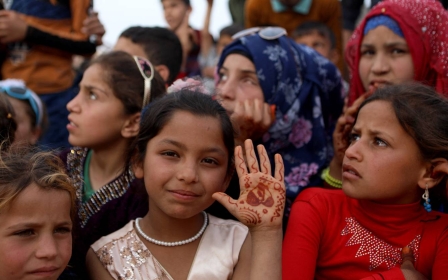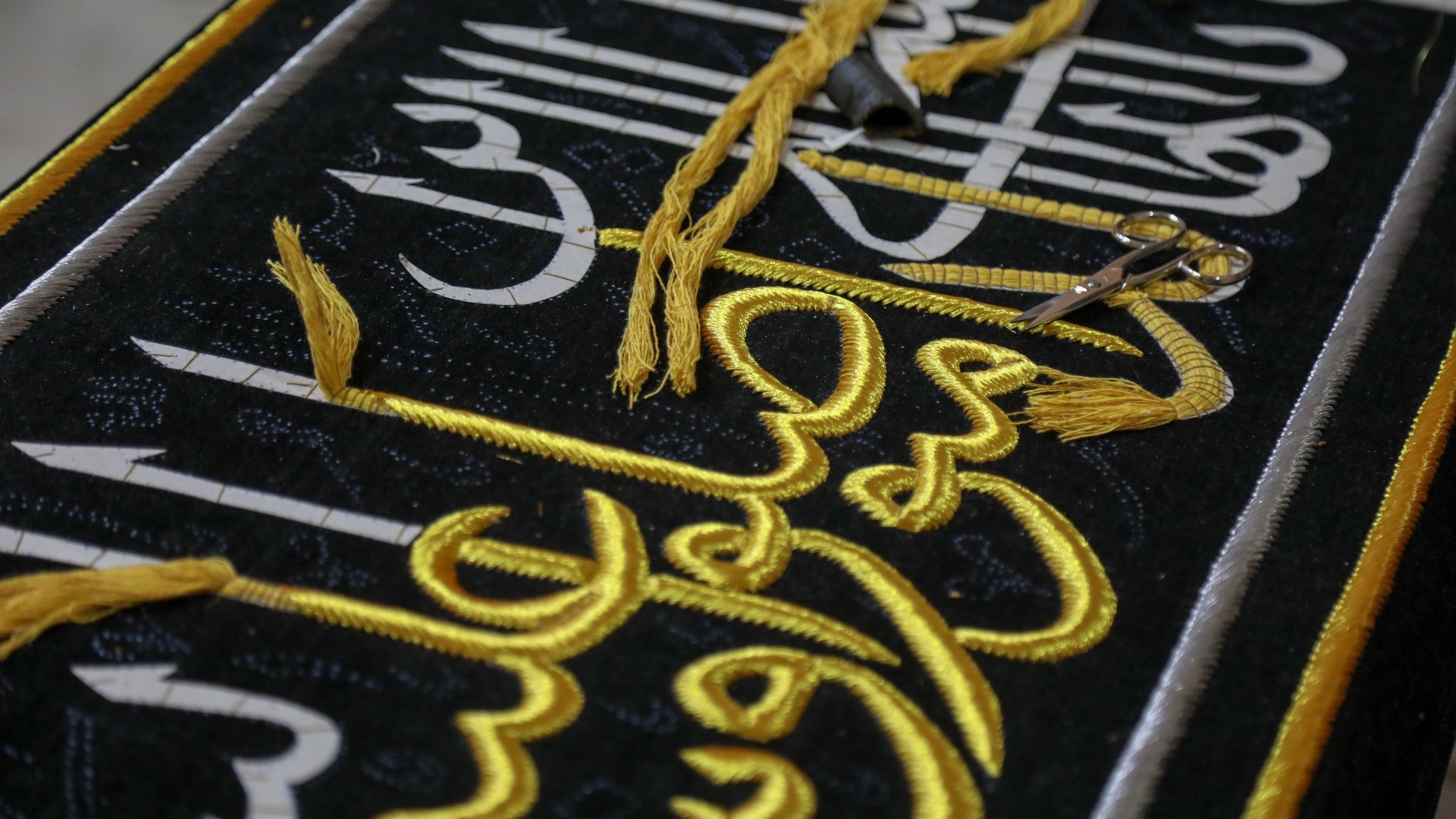
In pictures: Inside the Cairo workshop that made the Kaaba's 'kiswa' cloth

As Muslims around the world prepare for the Islamic pilgrimage of Hajj, set to take place this month, all eyes are on the Great Mosque of Mecca in Saudi Arabia, where the Kaaba is located.
The cube structure is the focus of prayer for Muslims wherever they are and is described as "bayt Allah" or the House of God. The building is considered sacred by Muslims, who circumambulate it during the Hajj and Umrah pilgrimages to symbolise the unity of God.
One of the most striking features of the building is the black silk cover draped on it, known as the kiswa. The kiswa cloth is changed every year on the ninth day of Dhul Hijjah, the 12th month of the Islamic lunar calendar.
Due to the kiswa's intricate design, it is considered to be a fine example of Islamic art and is highly regarded. Old kiswas are often cut up, with each piece gifted to high profile people or dignitaries. (All photos by Fadel Dawod)
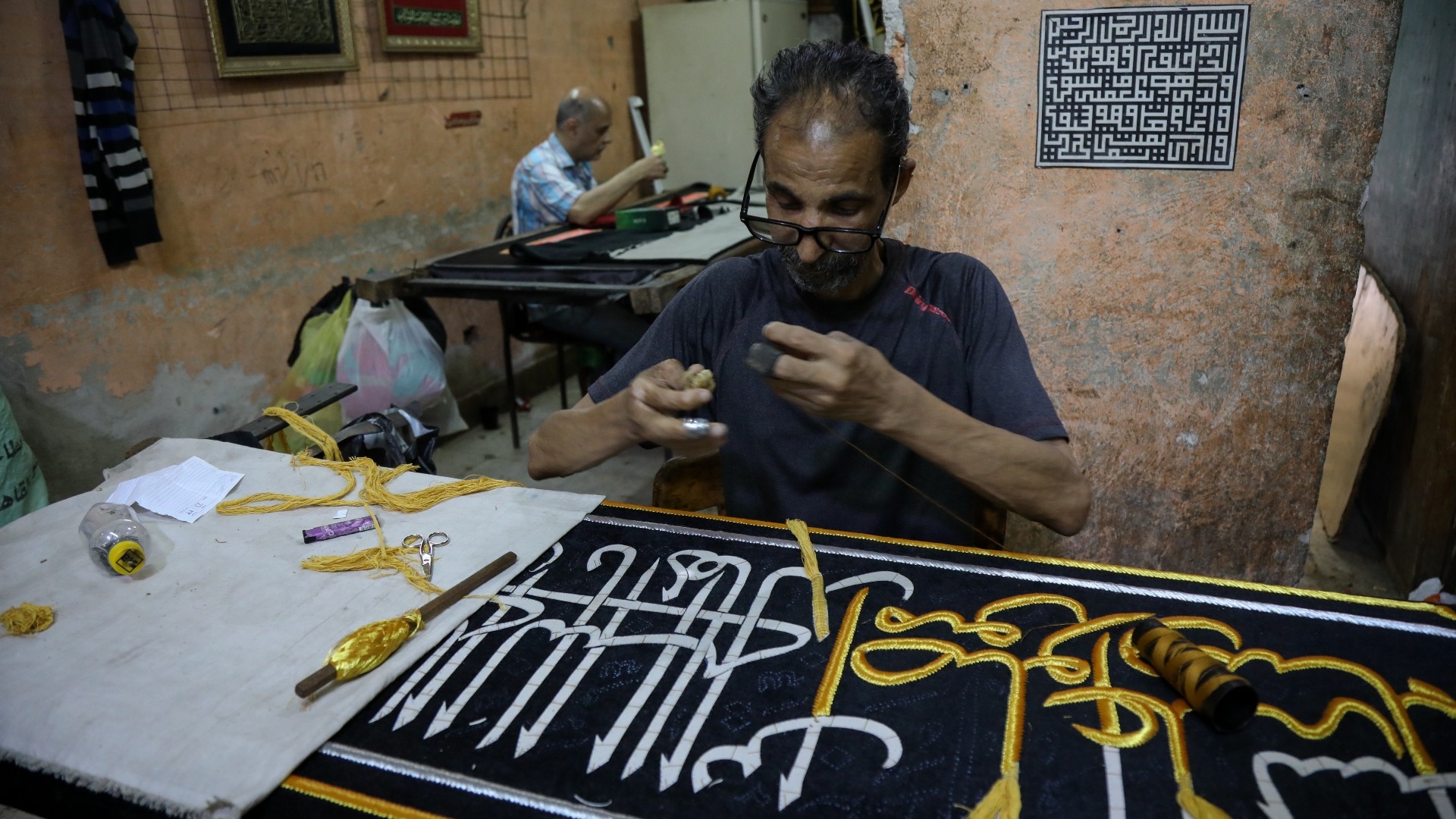
The kiswa is hand embroidered with verses from the Quran using gold and silver thread. Today it is a function performed by skilled craftspeople based in Mecca. However, before the right to produce the kiswa was retained exclusively for Saudi Arabia, it was made in Egypt.
During Fatimid rule in the 12th century, Cairo was tasked with making the cover of the Kaaba. Dedicated workshops were founded to make the cover, and once complete, it was transported on the back of camels, who were protected by an entourage of soldiers until it arrived safely in Mecca.
Before the kiswa would leave Cairo, people would gather in the streets to catch a glimpse of the historic occasion and cheer.
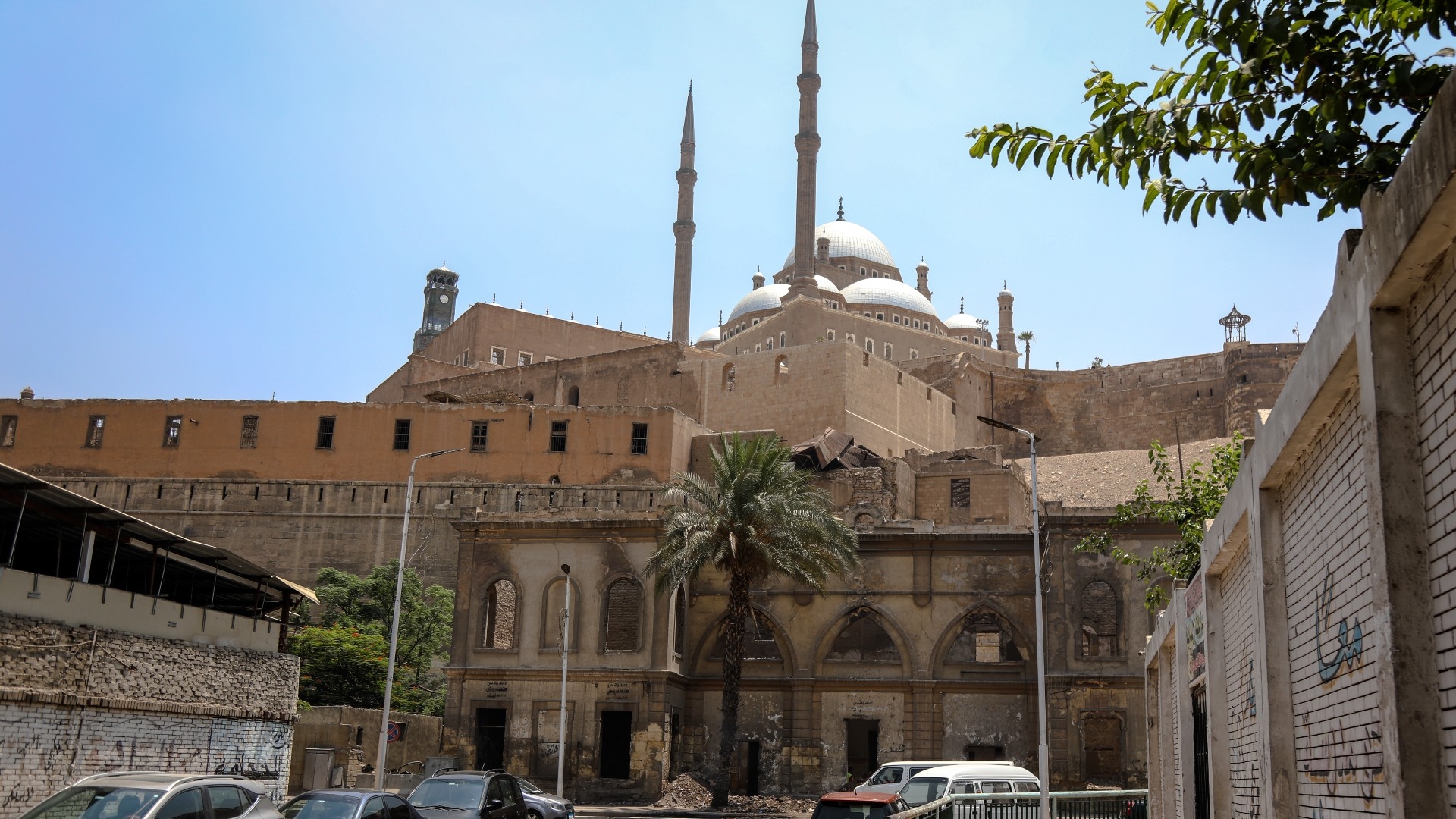
Egypt had the role of making the kiswa until 1962, when it was passed on to Saudi Arabia. Today, a number of workshops where the kiswa was made still exist in Cairo.
Sobhi Salih al-Tayyib, 80, is one of the last remaining people involved in making the kiswa in Cairo. Al-Tayyib says that he first started working in Dar al-Kiswah in al-Kharnfash neighbourhood of Cairo at the age of 15 alongside his father.
"It's a profession that I used to love and it was a great honour to participate in making something for the Holy Kaaba," he told Middle East Eye, explaining that he is sad that it is no longer made in Cairo. "I would be working on it with complete conviction that what we were doing was distinguished," he added.
Dar al-Kiswah operated for over a century, and at its peak employed over 100 craftspeople. This photo shows one of the locations of the kiswa factories, located in al-Khalifa neighbourhood of Cairo, near the Salah al-Din al-Ayyoubi citadel.
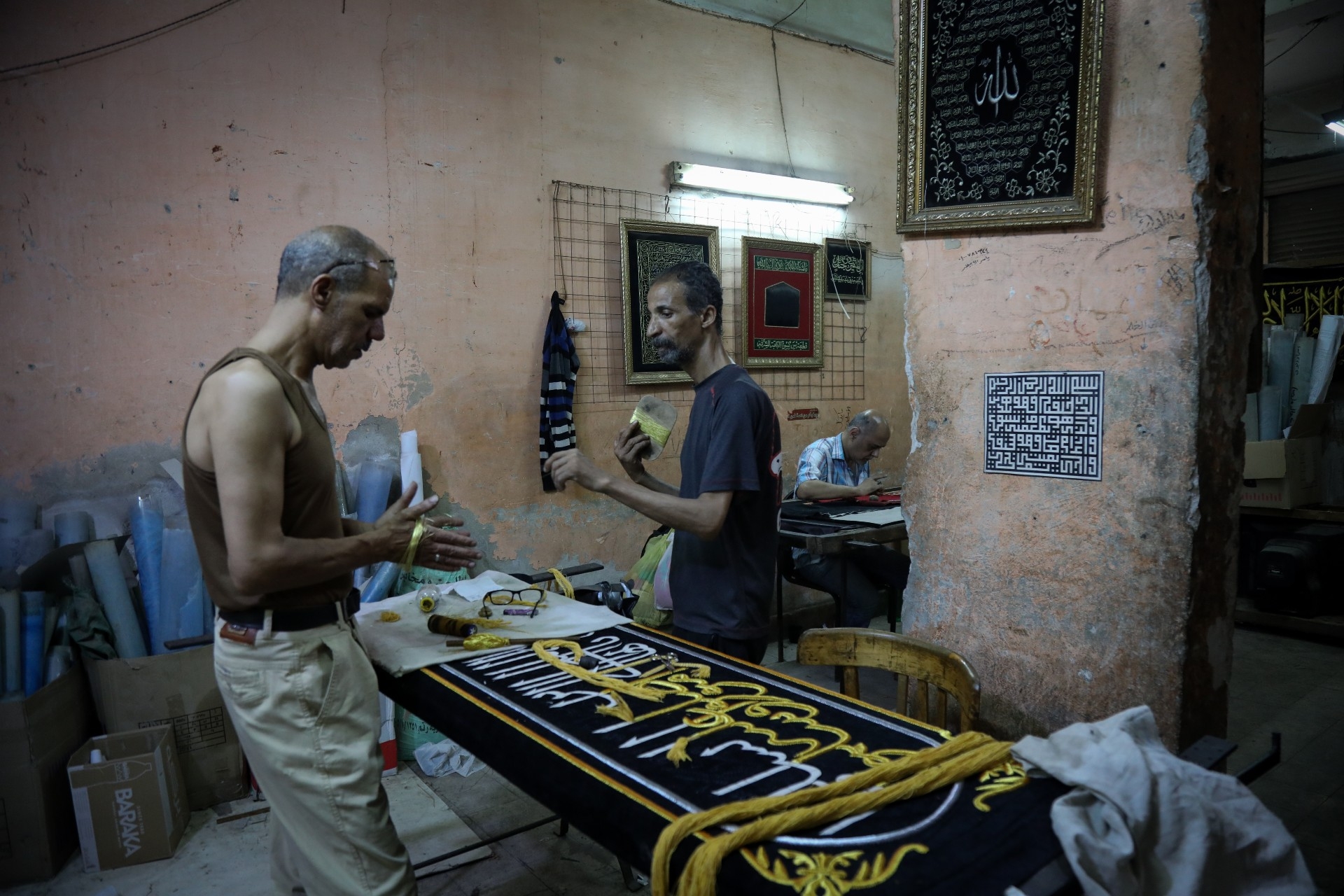
According to al-Tayyib, there were around 60 people working on making the kiswa in Cairo throughout the year.
Today, he works for international exhibitions which feature smaller versions of the kiswa and other textiles and wall hangings featuring Arabic calligraphy. His work has been displayed as far away as Indonesia and the Gulf countries.
He also works on custom orders for royalty around the world. One example was a wall hanging made for the Sultan of Brunei, which imitated the door of the Kaaba.

Today, old workshops in Cairo are used to make small versions of the kiswa and other forms of decorative embroidery. The custom orders are sent in from around the world, including Russia and the Gulf countries, to decorate homes and institutions. Here, the kiswa is displayed in a museum in Fustat, Old Cairo.
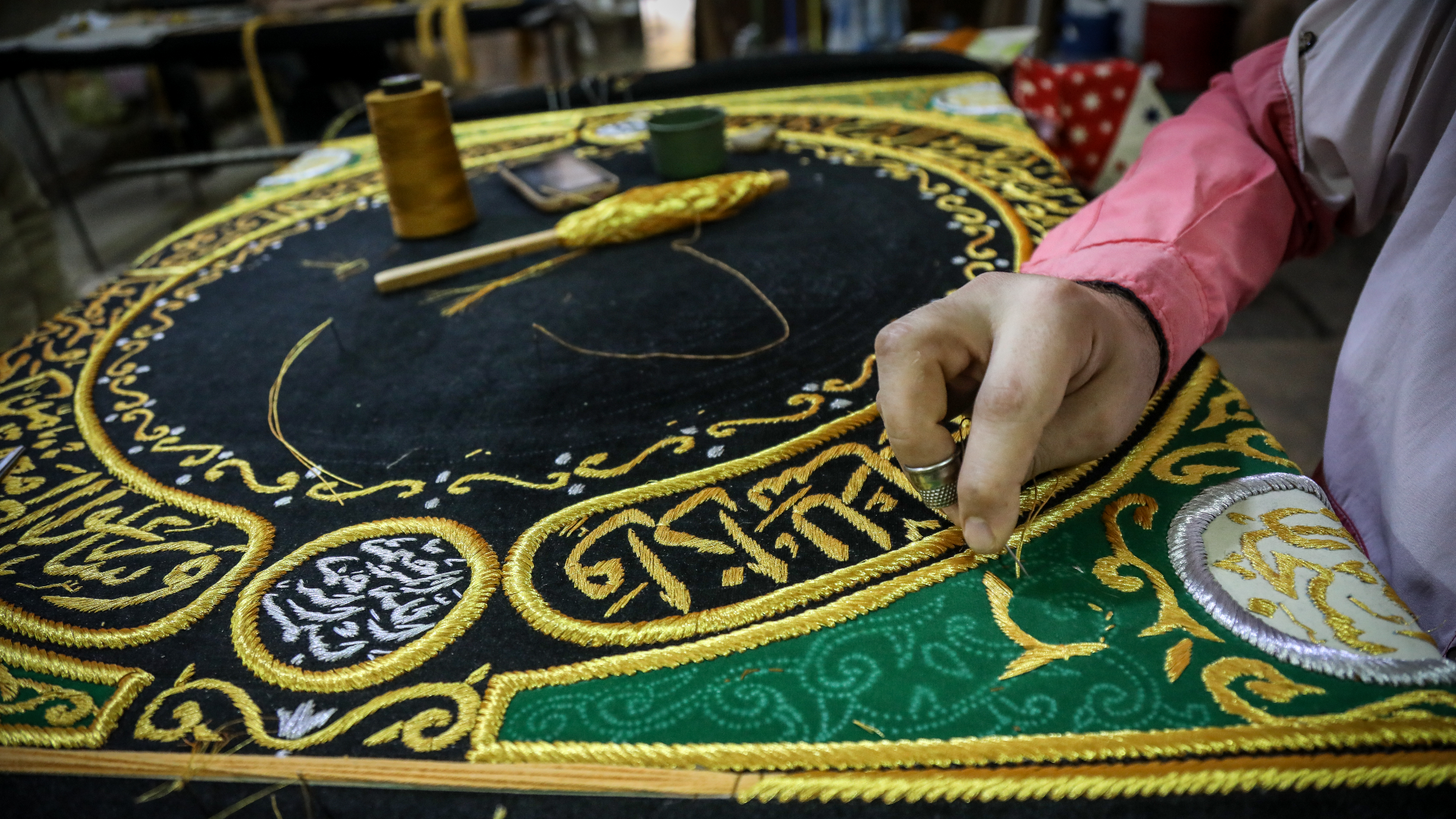
The process of making the kiswa is long and meticulous. Traditionally in Egypt, the kiswa was first made by mapping out the designs on transparent paper that was perforated with holes and placed on wool. Then, ink would be sprayed on the transparent paper, and the workers would stitch the area with gold thread.

Yasser Muhammad, 50, works in al-Tayyib's workshop and says that making the kiswa is no easy task. "It is difficult for this generation to learn how to make it because it requires great patience," he says.

In the National Museum of Egyptian Civilization, located in Fustat, old examples of the kiswa are displayed. The museum, which was inaugurated in 2021, contains artefacts from around ancient Egypt, as well as pieces from the Pharaonic, Coptic and Islamic eras.
One of the kiswas on display is an original which did not end up making it to Saudi Arabia. The exhibition also showcases the mahmal, the Arabic for caravan, which would transport the kiswa to Mecca.
Middle East Eye propose une couverture et une analyse indépendantes et incomparables du Moyen-Orient, de l’Afrique du Nord et d’autres régions du monde. Pour en savoir plus sur la reprise de ce contenu et les frais qui s’appliquent, veuillez remplir ce formulaire [en anglais]. Pour en savoir plus sur MEE, cliquez ici [en anglais].




